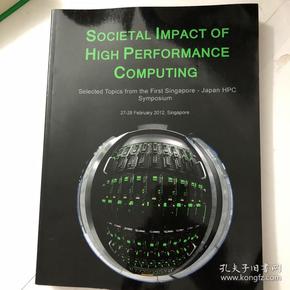High-Performance Computing Hardware: A Comprehensive Guide
This comprehensive guide to high-performance computing hardware provides a detailed understanding of the essential components and considerations for building or purchasing a high-performance computing system. It covers a range of topics from processors and memory to storage and networking, offering practical advice and guidance for making informed decisions about each component. The guide also includes information on system integration, testing, and optimization, essential for achieving high performance from the hardware. Whether you are a beginner or experienced user, this guide will help you to understand the intricacies of high-performance computing hardware and make the most of your system.
High-performance computing (HPC) hardware is designed to handle complex computational tasks that require high levels of processing power, memory, and storage capacity. HPC hardware is typically used in scientific research, engineering, and other fields that require large-scale data processing and analysis.
In this guide, we will explore the different types of HPC hardware, their features, and how they are used in high-performance computing. We will also discuss the benefits of using HPC hardware and how it can help organizations enhance their computing capabilities.
Types of HPC Hardware
1、Supercomputers: Supercomputers are the most powerful type of HPC hardware. They are typically built for specific applications or tasks that require the highest level of computing performance. Supercomputers may consist of hundreds or thousands of processors, memory modules, and storage devices. Examples include the Summit supercomputer at Oak Ridge National Laboratory and the Theta supercomputer at Argonne National Laboratory.

2、Clusters: Clusters are groups of computers that are connected together to form a single large computing system. Each computer in the cluster can run its own operating system and applications, but they can also be coordinated to perform parallel processing tasks. Clusters are often used for large-scale data processing, simulation, and modeling.
3、Distributed Systems: Distributed systems are made up of multiple interconnected computers that share resources and work together to solve complex problems. Each computer in the system may have its own operating system and applications, but they can also be managed as a single unit to provide high availability, scalability, and fault tolerance. Distributed systems are often used in scientific research, engineering, and other fields that require large-scale data processing.
4、Graphics Processing Units (GPUs): GPUs are specialized chips that are designed to perform parallel processing tasks on large datasets. They are often used in high-performance computing applications such as deep learning, machine learning, and computer graphics rendering. GPUs can provide significant acceleration for these types of tasks compared to traditional CPUs.
5、FPGAs (Field Programmable Gate Arrays): FPGAs are reconfigurable devices that can be programmed to perform specific tasks or functions. They are often used in high-performance computing applications such as data processing, signal processing, and network routing. FPGAs can provide high levels of performance and efficiency for these types of tasks compared to traditional CPUs and GPUs.
Features of HPC Hardware
1、High Performance: HPC hardware is designed to provide high levels of processing power, memory, and storage capacity. This allows organizations to handle complex computational tasks that would be impossible on traditional computers.
2、Scalability: HPC hardware can be easily scaled up or down to meet the changing needs of an organization. This allows organizations to quickly adapt to changes in workload or data requirements.
3、Fault Tolerance: HPC hardware is designed to provide high availability and fault tolerance. This means that if one component fails, the system can continue to operate using other components or nodes.
4、Parallel Processing: HPC hardware supports parallel processing, which allows multiple tasks to be performed simultaneously. This can significantly enhance the performance of computationally intensive tasks.

5、Interconnectivity: HPC hardware is designed to support high-speed interconnectivity between components or nodes. This allows data to be shared quickly and efficiently between different parts of the system.
Benefits of Using HPC Hardware
1、Enhanced Computing Capabilities: By using HPC hardware, organizations can enhance their computing capabilities significantly. This allows them to handle complex computational tasks that would be impossible on traditional computers, such as large-scale data processing, simulation, and modeling.
2、Cost Savings: HPC hardware can help organizations save significant amounts of money by reducing the need for expensive computer systems or cloud computing resources. By using HPC hardware, organizations can build their own high-performance computing systems that are tailored to their specific needs, which can help them save money in the long run.
3、Improved Efficiency: HPC hardware can help organizations improve their efficiency by providing high levels of performance and efficiency for computationally intensive tasks compared to traditional CPUs and GPUs. This allows organizations to complete tasks faster and with fewer errors, which can help them save time and improve productivity.
4、Flexibility: HPC hardware provides organizations with significant flexibility in terms of scalability, fault tolerance, and parallel processing capabilities. This allows organizations to tailor their systems to meet their specific needs and requirements, which can help them enhance their overall computing performance.
5、Enhanced Collaboration: By using HPC hardware, organizations can enhance collaboration among team members by providing a shared computing platform that allows them to work together on complex tasks efficiently. This can help organizations improve team productivity and efficiency while reducing the need for expensive collaboration tools or software licenses.
In conclusion, HPC hardware provides organizations with significant benefits in terms of enhanced computing capabilities, cost savings, efficiency, flexibility, and collaboration. By understanding the different types of HPC hardware and their features, organizations can choose the right type of hardware for their specific needs and requirements to enhance their overall
Articles related to the knowledge points of this article:
Hardware Nailsea: The Comprehensive Guide
ZClip Hardware: The Comprehensive Guide
AMDECOR HARDWARE: BUILDING MATERIALS AND CUSTOM SOLUTIONS
Title: The Ultimate Guide to the Best File Hardware Tools for 2023
Title: The Role of Home Hardware Outside Doors in Enhancing the Exterior Look



